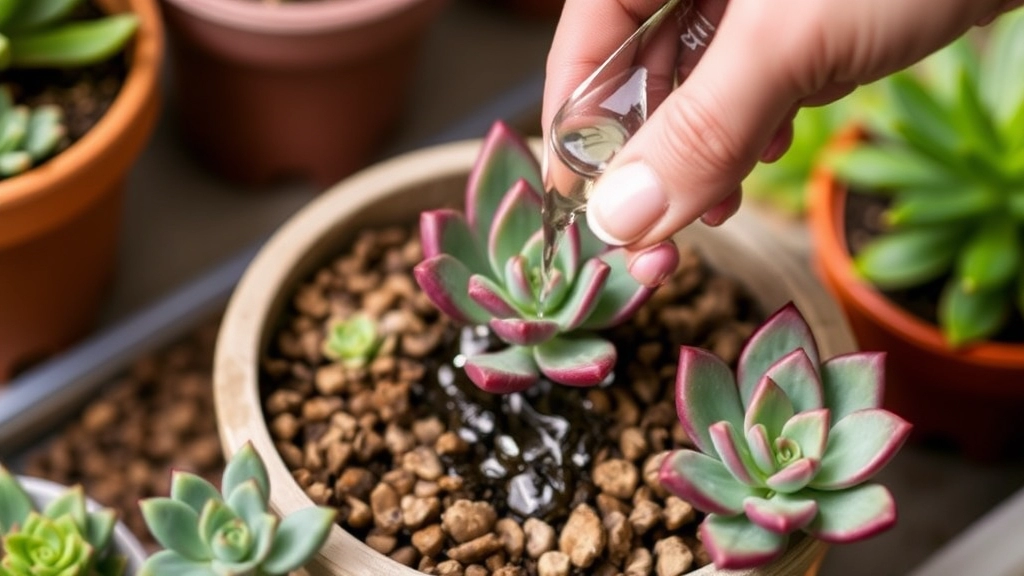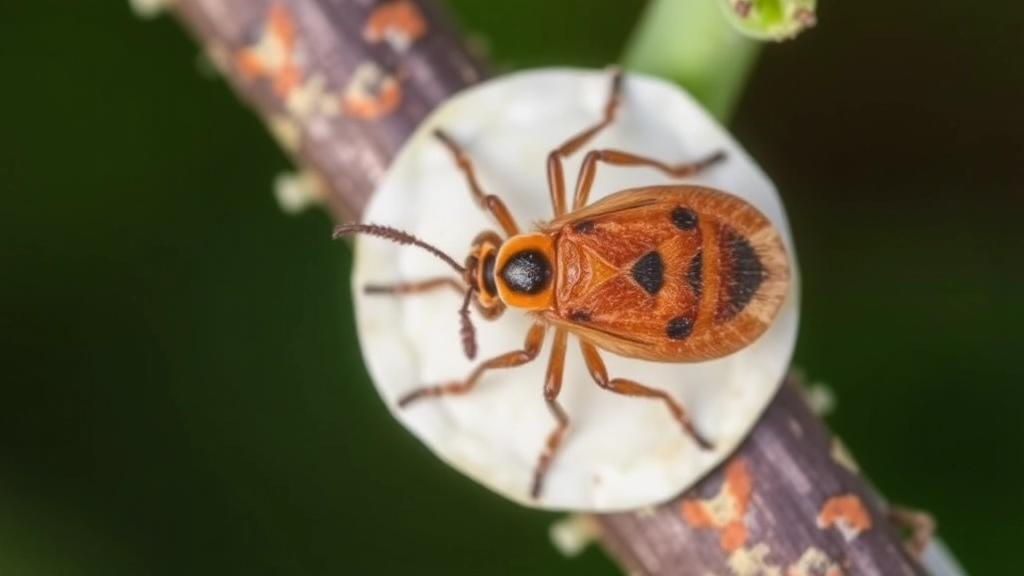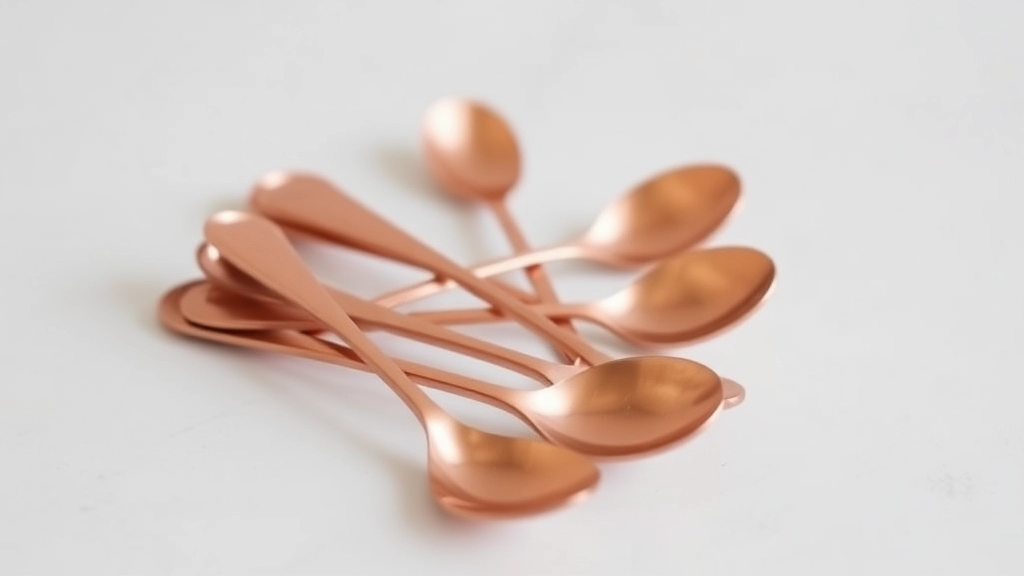Kalanchoe Copper Spoons
When it comes to the unique and captivating Kalanchoe Copper Spoons, also known as Kalanchoe Orgyalis, getting the growing conditions right is key. These succulents thrive in well-draining soil and require minimal watering, making them perfect for those who might not have the greenest of thumbs. Ensure they receive plenty of sunlight, ideally indirect, to maintain their stunning coppery leaves.
Propagation is a breeze with Copper Spoons, whether you choose to use stem cuttings, leaf cuttings, or offsets. Keep an eye out for common pests like aphids and mealybugs, and make sure to protect your plant from extreme temperatures. With the right care, Kalanchoe Copper Spoons can be a striking addition to both indoor and outdoor spaces, offering a touch of low-maintenance elegance.
Understanding the ideal growing conditions for Copper Spoons (Kalanchoe orgyalis) is crucial for their health and vibrancy. These succulents prefer a warm environment with temperatures ranging from 20°C to 30°C (68°F to 86°F) during the day and should not drop below 10°C (50°F) at night. They thrive in low humidity, ideally below 50%, and should be placed in well-ventilated areas to prevent fungal infections.
Proper potting is also vital for their growth. Use pots with drainage holes and consider adding a drainage layer of gravel or perlite at the bottom. While Copper Spoons are not heavy feeders, they benefit from occasional fertilisation with a balanced, diluted succulent fertiliser once every month during the growing season (spring and summer). For more detailed guidance, you can check out the [maximum height and growth tips for Copper Spoons](https://planthq.org/kalanchoe-copper-spoons-maximum-height-growth-tips/) and the [complete care guide for Kalanchoe Paddle Plant](https://planthq.org/complete-guide-to-kalanchoe-paddle-plant-care/), which shares similar care requirements.
Proper Watering Techniques for Succulents

So, you’ve got your Copper Spoons and you’re ready to nurture them, but how do you keep them hydrated without drowning them?
Watering succulents can feel like walking a tightrope. Too much, and you risk root rot; too little, and they’ll shrivel up.
Here’s how to nail it:
- Check the Soil: Stick your finger about an inch into the soil. If it feels dry, it’s time to water. If it’s still moist, hold off.
- Water Deeply but Infrequently: When you do water, give them a good soak. Let the water run through the drainage holes. This encourages deep root growth.
- Use Room Temperature Water: Cold water can shock the plant. Room temperature is best.
- Time It Right: Water in the morning or evening to avoid evaporation.
A Few More Tips:
- Seasonal Adjustments: In the summer, you might water more often, while in winter, you can cut back significantly.
- Observe Your Plant: Yellowing leaves? Overwatering. Wrinkled leaves? Underwatering.
By following these tips, you’ll keep your Copper Spoons happy and thriving.
When it comes to growing Kalanchoe Orgyalis, one of the most common concerns is ensuring the plant receives the right amount of light.
**Why is light so crucial?**
Kalanchoe Orgyalis, commonly known as Copper Spoons, thrives in bright, indirect sunlight. Without adequate light, the plant may become leggy and lose its vibrant colour.
**Optimal Light Conditions:**
– **Bright Indirect Sunlight:** Aim for 6-8 hours of bright, indirect sunlight daily.
– **Avoid Direct Sunlight:** Too much direct sun can scorch the leaves, leading to unsightly brown patches.
– **Rotation:** Rotate your plant every few weeks to ensure even growth and exposure to light.
**Signs of Insufficient Light:**
– **Leggy Growth:** If your Copper Spoons are stretching towards the light, it’s time to reposition them.
– **Faded Colour:** A loss of vibrant colour can indicate that your plant is not receiving enough light.
**Best Locations:**
– **Near a South or East-Facing Window:** These spots generally provide the best light conditions.
– **Grow Lights:** If natural light is limited, consider using grow lights to supplement.
For more detailed care tips, you can refer to this [Kalanchoe Copper Spoons Flower Care and Propagation Guide](https://planthq.org/kalanchoe-copper-spoons-flower-care-and-propagation-guide/). Additionally, if you are interested in the overall care for Kalanchoe succulents, check out the [Ultimate Guide on How to Care for Kalanchoe Succulent](https://planthq.org/how-to-care-for-kalanchoe-succulent-ultimate-guide/).
Best Soil Mix for Optimal Growth

When it comes to nurturing Copper Spoons (Kalanchoe orgyalis), the right soil mix is crucial for their health and vitality. Many succulent enthusiasts often wonder what type of soil will provide the best drainage and nutrients for these beautiful plants.
Ideal Soil Composition
For optimal growth, Copper Spoons thrive in a well-draining soil mix. Here are some key components to consider:
- Cactus Mix: Start with a quality cactus potting mix as your base. This type of soil is designed to drain quickly, preventing root rot.
- Perlite or Pumice: To enhance drainage further, mix in perlite or pumice. These lightweight materials create air pockets, allowing excess water to escape easily.
- Organic Matter: Adding a small amount of organic matter, like compost, can provide essential nutrients without retaining too much moisture.
Recommended Ratios
A simple recipe for the perfect soil mix could be:
- 50% cactus mix
- 30% perlite or pumice
- 20% organic matter
This combination ensures that your Copper Spoons have the right balance of drainage and nutrients to flourish.
Benefits of the Right Soil Mix
Using an appropriate soil mix can lead to:
- Healthy Root Development: Well-draining soil prevents roots from sitting in water, reducing the risk of rot.
- Vibrant Growth: A nutrient-rich environment supports robust growth and vibrant foliage.
- Disease Resistance: Proper drainage helps prevent fungal diseases that can plague succulents.
Propagation is a rewarding way to multiply your Copper Spoons (Kalanchoe orgyalis) and share them with friends.
Stem Propagation
Step-by-Step Guide:
- Select a Healthy Stem: Look for a robust stem with several leaves.
- Make the Cut: Use a clean, sharp knife or scissors to take a cutting about 10-15 cm long.
- Callus the Cutting: Allow the cut end to dry for a few days until a callus forms. This helps prevent rot.
- Plant the Cutting: Place the callused end into well-draining soil and water sparingly.
Leaf Propagation
How to Do It:
- Choose a Leaf: Pick a healthy, plump leaf from the plant.
- Remove the Leaf: Gently twist the leaf off the stem, ensuring you take the entire leaf without damage.
- Let it Callus: Place the leaf on a dry surface for a few days.
- Planting: Once callused, lay the leaf on top of moist soil and lightly mist it. Roots will develop over time.
Offsets Propagation
Simple Steps:
Common Pests and How to Prevent Them

So, you’ve got your Copper Spoons thriving, but what about those pesky pests that might want to crash the party?
Let’s face it, dealing with pests can feel like a nightmare.
Common Pests to Watch Out For:
- Mealybugs: These little white fluffballs love to hide in the nooks and crannies of your plants.
- Spider Mites: Tiny and sneaky, they can create a web-like mess on your succulents.
- Aphids: These green or black bugs suck the sap right out of your plants.
- Scale Insects: They look like small bumps on the leaves and can be tough to spot at first.
Prevention Tips:
- Regular Inspection: Check your plants weekly for any signs of pests. The sooner you catch them, the easier they are to manage.
- Clean Leaves: Wipe down the leaves with a damp cloth to remove dust and any potential pests.
- Quarantine New Plants: If you bring home a new plant, keep it away from your others for a couple of weeks to ensure it’s pest-free.
- Natural Predators: Consider introducing beneficial insects like ladybugs that feast on aphids.
- Neem Oil: A natural pesticide that can help keep pests at bay. Just mix it with water and spray it on your plants.
- Diatomaceous Earth: Sprinkle this powder around your plants to create a barrier that pests can’t cross.
- Avoid Overwatering: Pests thrive in damp conditions, so make sure your Copper Spoons are well-drained.
Keeping your plants healthy and pest-free is key to their growth and vibrancy.
Handling Temperature Extremes: Heat and Frost Protection
As we delve deeper into caring for your Copper Spoons, it’s essential to address a common concern: how to protect your plants from temperature extremes.
Understanding Temperature Sensitivity
Kalanchoe Orgyalis, like many succulents, can be sensitive to both heat and frost.
FAQs About Caring for Kalanchoe Copper Spoons
How often should I water my Copper Spoons?
Water your Copper Spoons when the soil feels dry about an inch deep. It’s crucial to water deeply but infrequently, allowing the water to run through the drainage holes.
What type of water should I use for my succulents?
Use room temperature water to avoid shocking the plant. Cold water can be detrimental to your Copper Spoons.
When is the best time to water Copper Spoons?
Water your Copper Spoons in the morning or evening to minimize evaporation and ensure the plant absorbs the water efficiently.
What soil mix is best for Copper Spoons?
An ideal soil mix for Copper Spoons includes 50% cactus mix, 30% perlite or pumice, and 20% organic matter. This ensures good drainage and adequate nutrients.
Why is well-draining soil important for succulents?
Well-draining soil prevents root rot by allowing excess water to escape. It also promotes healthy root development and vibrant growth.
What are the common pests that affect Copper Spoons?
Common pests include mealybugs, spider mites, aphids, and scale insects. Regular inspection and proper care can help prevent infestations.
How can I prevent pests on my Copper Spoons?
Prevent pests by inspecting your plants weekly, cleaning the leaves, quarantining new plants, and using natural predators or treatments like neem oil and diatomaceous earth.
What should I do if I notice yellowing leaves on my Copper Spoons?
Yellowing leaves typically indicate overwatering. Adjust your watering schedule and ensure the soil drains well to prevent root rot.
How can I tell if my Copper Spoons are underwatered?
Underwatered Copper Spoons will have wrinkled leaves. Increase your watering frequency slightly, but ensure the soil dries out between waterings.
Do I need to adjust my watering schedule seasonally?
Yes, in the summer, you might need to water more frequently, while in winter, you can cut back significantly to accommodate the plant’s dormant period.
References
-
How to Water Succulents Properly
-
Best Soil for Succulents
-
Common Pests and Pest Control for Succulents
